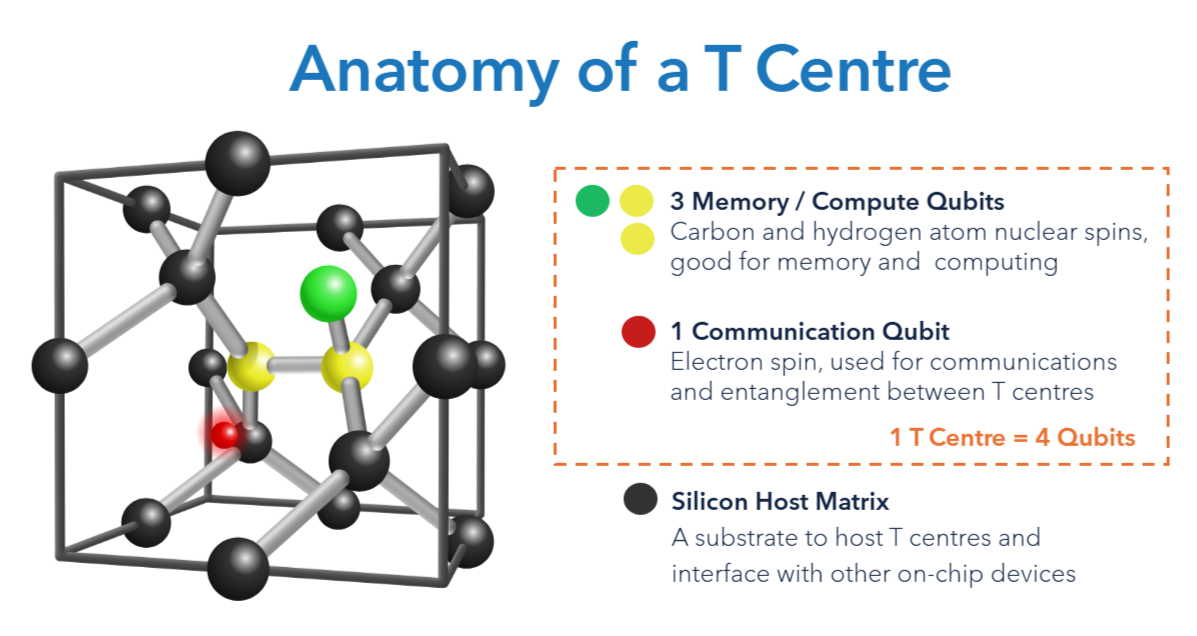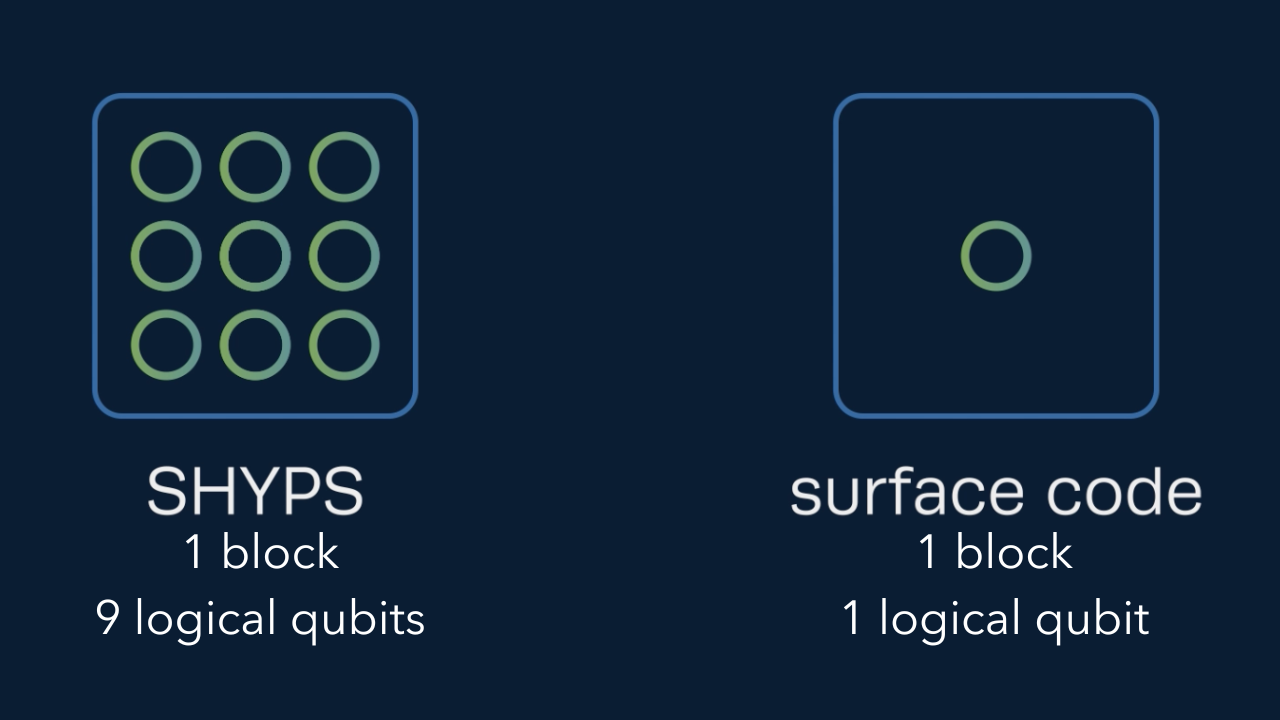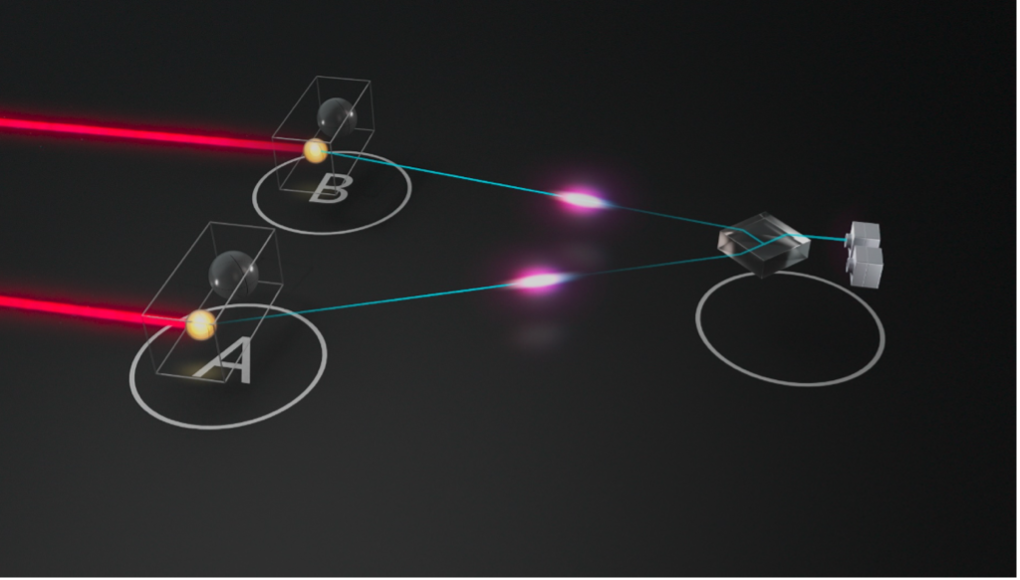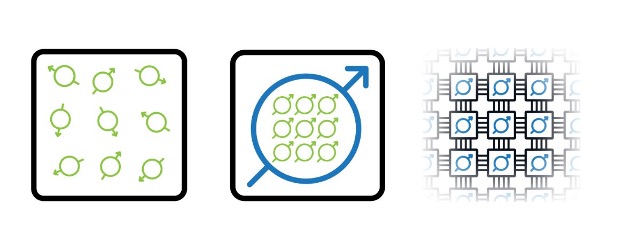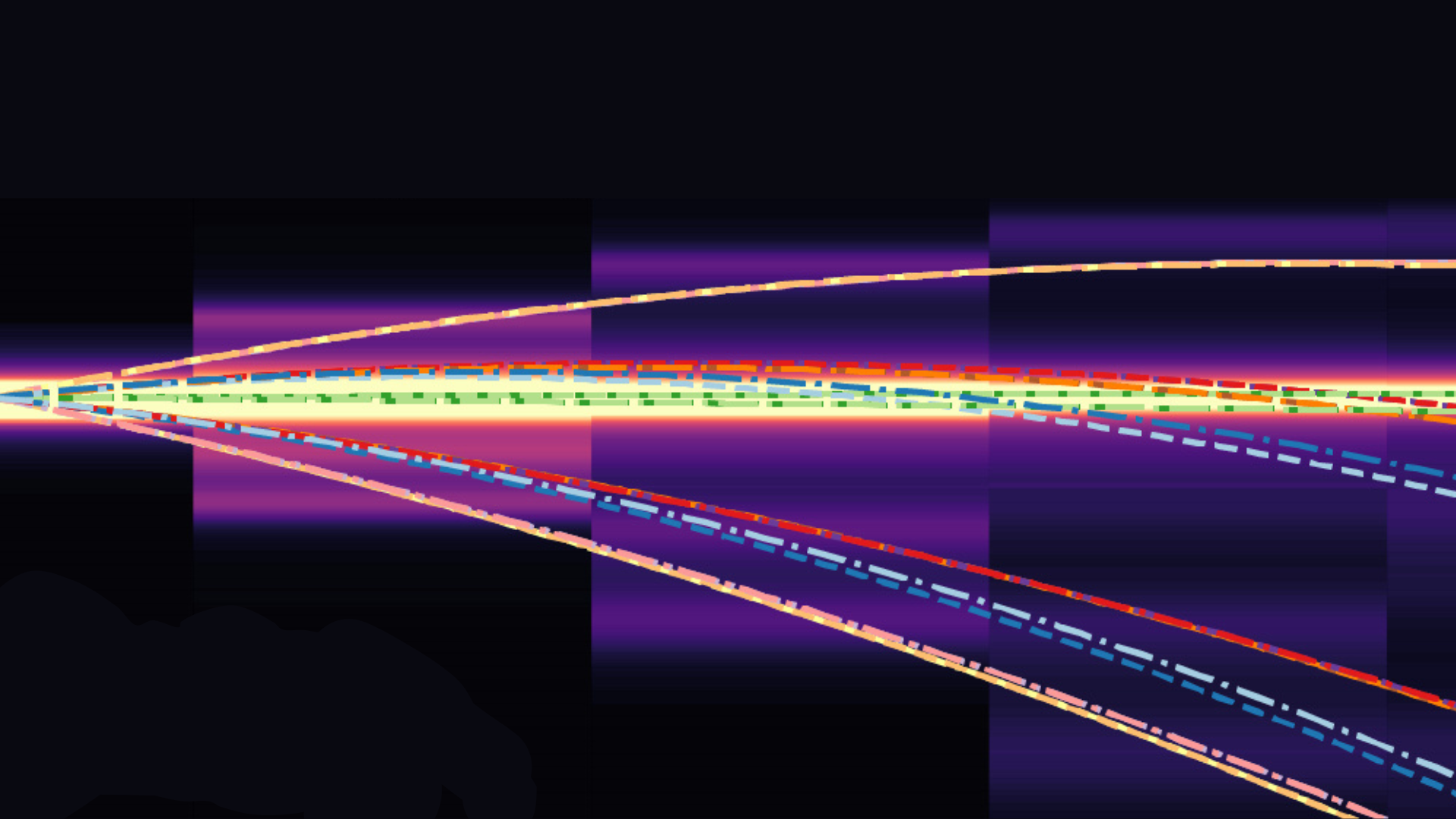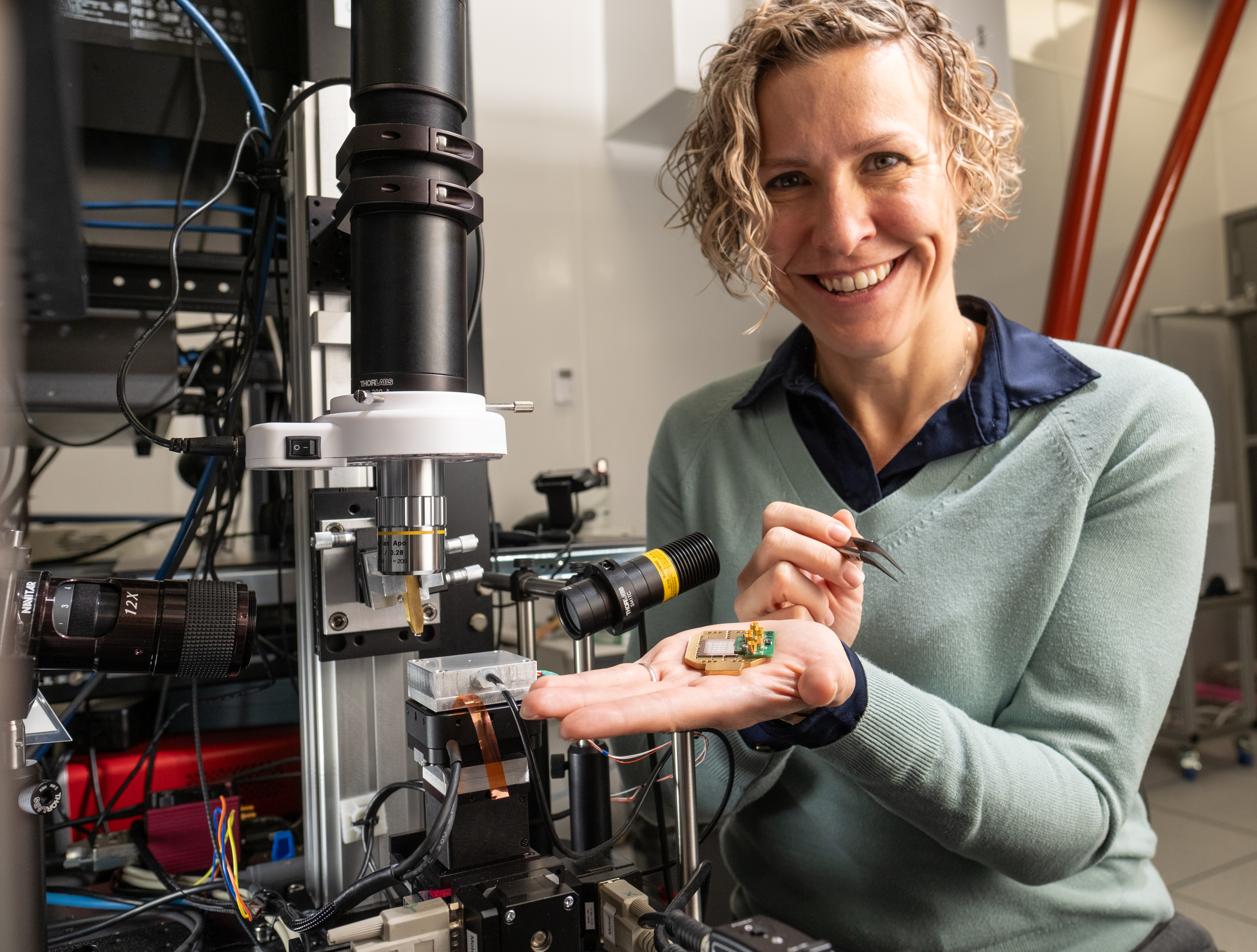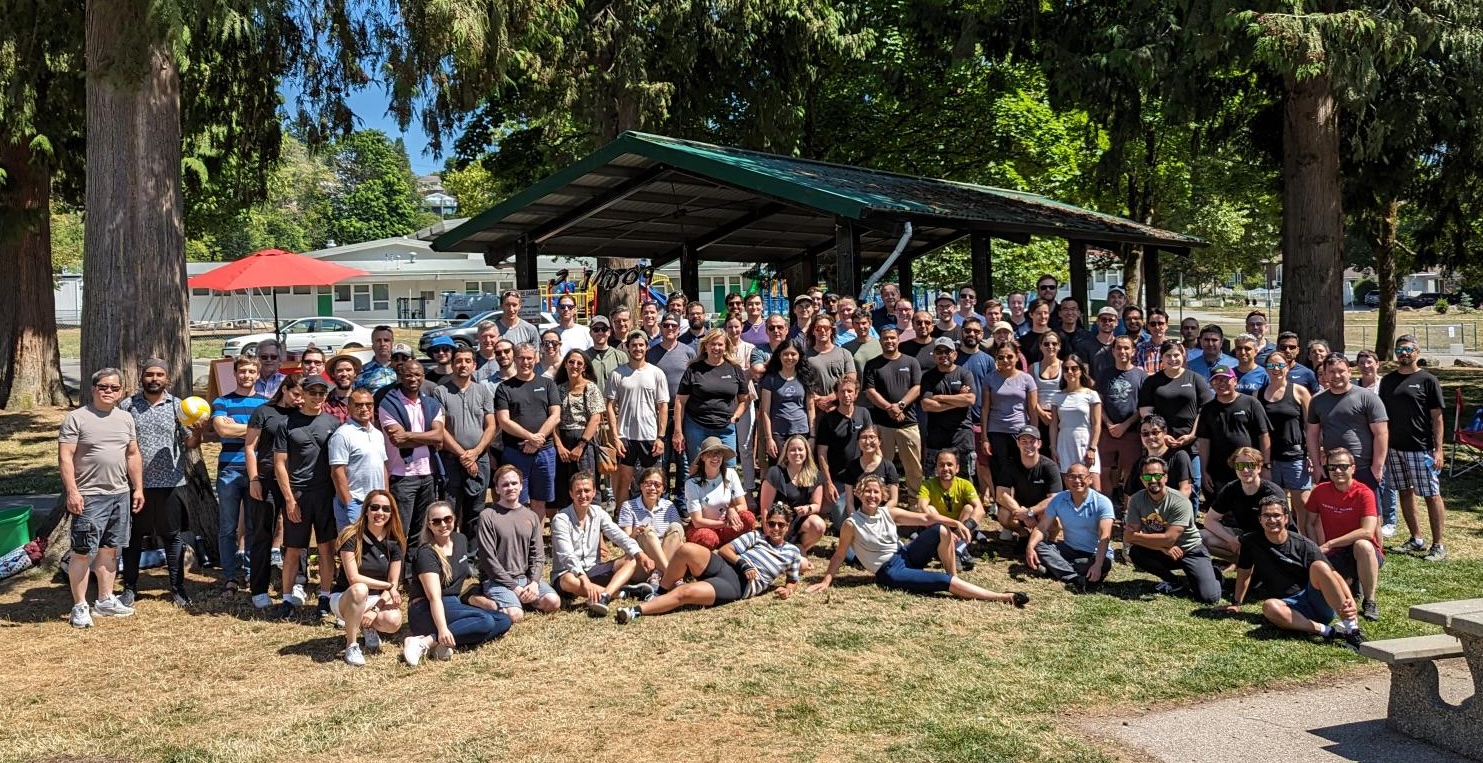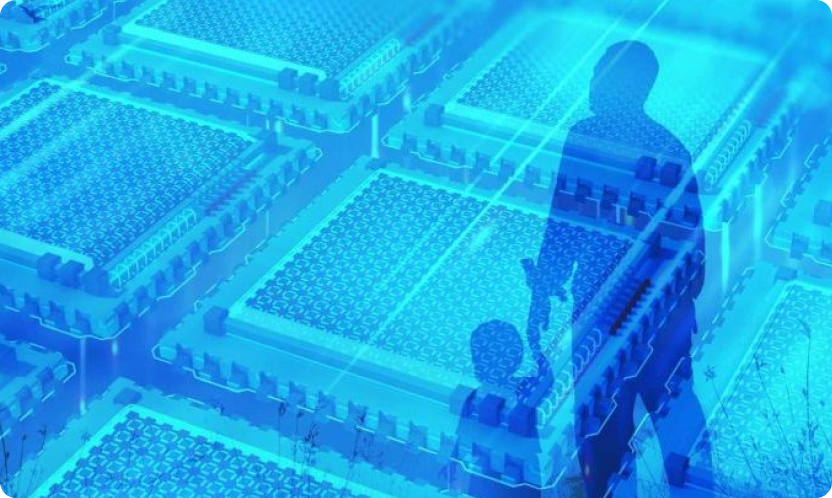The T centre and silicon are the ultimate quantum power-couple: combining telecom-band optical emission with established fabrication infrastructure. However, to truly unlock this pair’s potential, we need to ensure that T centre performance doesn’t degrade once integrated in devices. A new paper by our partners at Simon Fraser University, “Laser-induced spectral diffusion and excited-state mixing of silicon T centres”, now available at PRX Quantum, looks at how the very lasers used to communicate with the T centre can also cause its emission frequency to wander and excited state spins to scramble. Photonic is working with its partners to dramatically reduce these effects.

A fibre array delivers light to T centres integrated into silicon nanophotonic structures.
Embedding T centres in nanophotonic devices is a necessary prerequisite for scalability and a key advantage for colour centres (like the T centre) native to silicon host material. However, integrating T centres introduces spectral wandering (tiny, random shifts in emission frequency) which can slow down entanglement generation between remote emitters, a key component of Photonic’s architecture. However, what this research finds is that this spectral wandering is predominantly driven by the laser light used to communicate with the qubits, which hints at a solution to regain lost efficiency in entanglement generation. The researchers propose a resonance check scheme: a method to confirm spectral alignment before taking measurements. They show that using resonance checking can provide a 10x improvement in 2-qubit entanglement generation rates!
This paper also uncovers a second laser-driven effect: power-dependent excited state spin-mixing. This provides a powerful new lever – the ability to initialize spins quickly using only optical power, without additional hardware or complex protocols.
Key Takeaways:
- Both spectral diffusion and excited-state spin mixing of integrated silicon T centres are driven by resonant and off-resonant laser light.
- Resonance checking can improve the efficiency of remote entanglement schemes in the presence of laser-driven spectral diffusion.
- Laser-driven excited state mixing can be used to improve initialization efficiency.
We would like to acknowledge the contributions of all involved in this research.
Read the published paper on PRX Quantum and explore this related work from UC Berkely, also featured in PRX Quantum.


